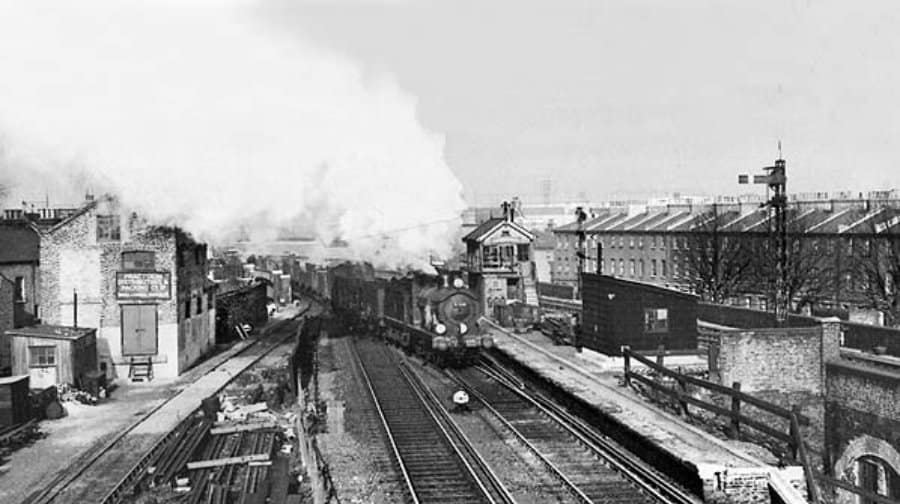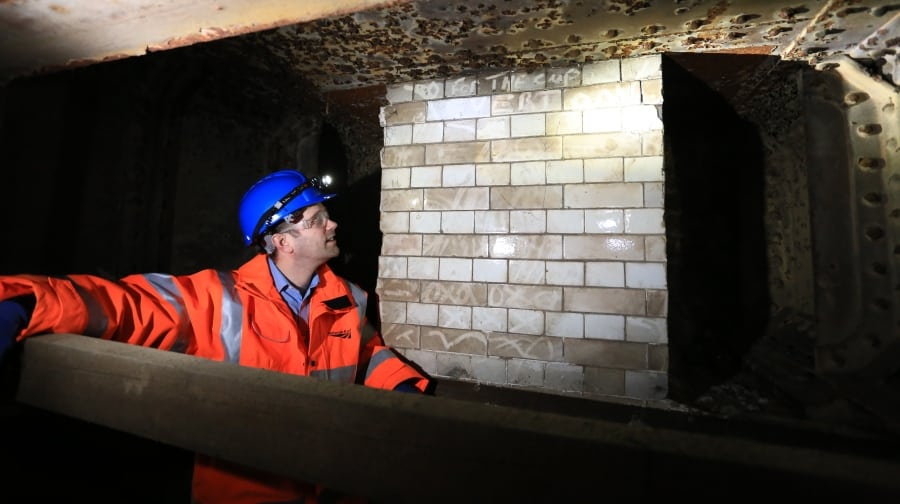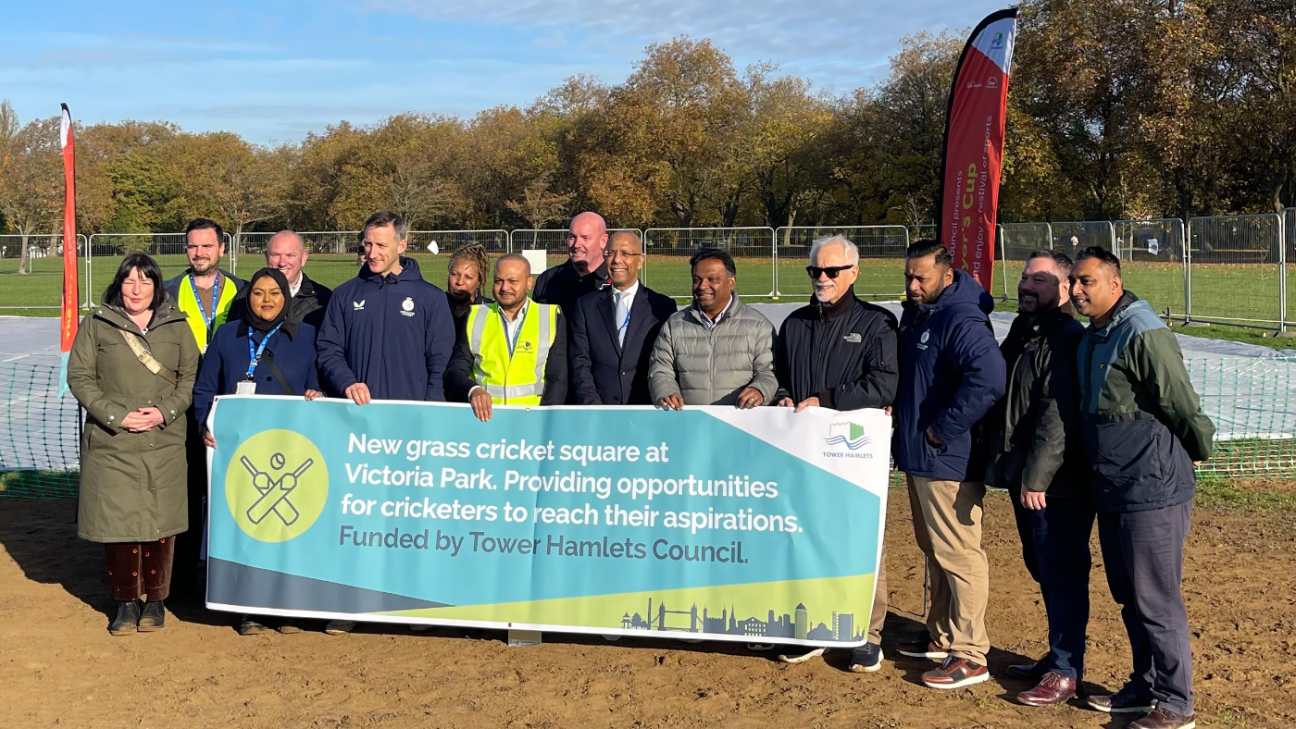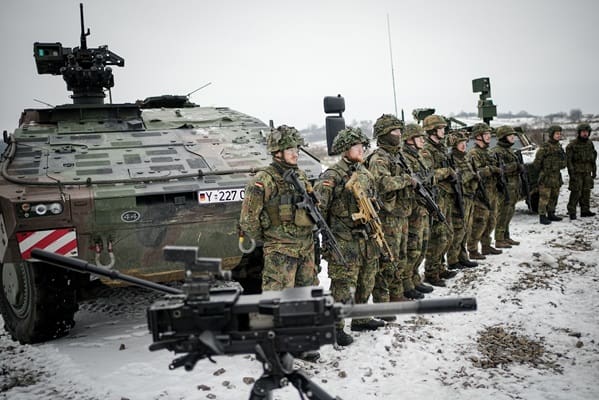Travel
London’s first train line, ghost stations and the golden age of travel: A history of Southwark’s railways

Picture it: 1947, a cold, very foggy January day in Bermondsey. Market traders down The Blue were stamping their feet, breath coming out in billows as they stood by their stalls trying to trade in the pea souper.
Women wrapped up in their newly-bought Christmas coats lugged shopping and chatted as kids tried to chase and find each other in the fog. Then suddenly – BANG! – a noise that was later described as being like a V2 rocket going off.
There’d been a train crash over John Bull Arch. An empty steam train had somehow found itself on the same track as the 10.06 from London Bridge, causing the passenger train to derail. As shoppers and traders rushed up to the arch they saw to their horror a train carriage flung across the parapet above them. And, in true Bermondsey spirit, people began tearing up bandages as others legged it up a ladderway to the bridge, giving aid to the dazed and shocked passengers.
Luckily the only serious casualty was guard Frederick Hopper who was taken to St Olave’s Hospital. You see, that’s the thing about Bermondsey – everyone is so used to the noise of the railway that no one notices it until something big happens; it’s so part of our heritage.
It is said that you can’t walk through Bermondsey without passing under a railway arch. But what about before the railways? At one time people accessed Southwark by stagecoach, horse or good old Shank’s pony. Much of the land was open countryside with little rows of cottages, farms, windmills and market gardens overshadowed by the Sydenham hills. For those living in the south the only way to get to the City of London was to travel across land and stay at the many inns in the Borough High Street. But just like travelling today commuters had plenty of problems.
The land around Bermondsey was marshy and prone to flooding; there were areas of quicksand – not much fun for Dobbin. There were the highwaymen and footpads lying in wait for the stagecoaches full of rich passengers to pass by. Plus of course, it took ages to get anywhere In 1829 horse-drawn omnibuses were carrying people around but at sixpence a go only the well-heeled could use them.
After Stephenson exhibited his rocket everyone wanted to build a railway and travel at high speed – eighteen miles an hour to be exact. The earliest passenger railway was built in Bermondsey. The London and Greenwich put down its tracks in 1836 and built a four-mile viaduct across the little houses and gardens. People living in the area were not amused: many structures had to be demolished and no compensation was offered, making those unfortunate individuals that lived in the way homeless.
The innkeepers along the High Street were furious – the railway saw off the stagecoach era along with a trade that had been flourishing for centuries. Some of the historic inns were razed to the ground and old established businesses were ruined to make way for London Bridge station.

The Greenwich railway temporarily terminated at Spa Road (the booking office can still be seen) but later that year extended to London Bridge, which became London’s first permanent railway terminus. The viaduct was made up of over eight-hundred-and-seventy arches and when the first stretch of track was opened the bells of every parish along those arches rang out. The company originally intended them to be used as model dwellings but who wanted to live underneath all that racket? Obviously it didn’t happen – even estate agents today would have trouble selling that one, despite being situated just minutes from London Bridge!
The arches were eventually let out for commercial use – wine, wood and coach building filled them up – with a few exceptions. One arch was used as a chapel and one as a pub – the Halfway House in Rotherhithe New road. Those that were not occupied were put to more dubious uses – vagrants and those not wanting to be found took up residence alongside sailors and prostitutes. They were also a convenient place to abandon unwanted new-born babies. How extremely sad.
As soon as the railway was up and running other companies sprung up. The London Croydon and the London Brighton railways all ran along the same tracks until they got to Corbett’s Passage in Rotherhithe New Road – there they all parted onto different lines, spurring the building of the world’s first signal box at the Corbett’s Lane junction.

Both the new railway companies had their terminus at Bricklayers Arms. Land around the Old Kent Road was cheap but it soon became clear that freight was where their fortunes lay, and so by 1852 only goods passed through. This terminus eventually closed in the 1960s after it became home to the British Road Service, who used Scammell lorries to unload parcels from the trains and deliver them by road.
Until the 1950s Paterson Park by St James’ Bridge was sidings for the Bricklayers Arms depot, the bridge being built to stop people crossing the tracks. But there were still fatalities. In 1878, St James’ crossing, also known as Mercer’s crossing, was the scene of a horrible accident.
A Mr E J Horne of Trothy Road decided to nip across the tracks in the dead of night and got wiped out by a goods train on its way to Brighton. The inquest was held at the Rosedale Arms pub in Rosebery Street where the jury heard how the signalman found Horne’s badly mutilated body on the tracks after several trains had passed over him.
Disused lines and stations are dotted all around Southwark. As steam train travel took off more and more rail companies were putting down tracks in the borough. And, as the years passed, more and more were closed up again. Long before the Jubilee Line laid down tracks for Southwark Underground there was a railway station in Blackfriars Road, which later became the Express building.
The station booking office was in Hopton Street and a sloped cobbled cab and carriage road ran up to the platforms. The station closed in 1885 after Ludgate Hill station made it redundant. The main building was kept for freight traffic until 1964.
Borough Road station opened in 1864 and closed in 1907. It’s a little-known fact that that ticket office still exists in Southwark Bridge Road as a garage opposite the Duke of York. Even when in use the station was usually desolate. Its platforms and signal box reached down to the arch that runs across Webber Street, but few trains ever stopped there. It only had three staff, including an inspector who collected tickets and shut carriage doors.

Trying to get to Camberwell is always a bit of a nightmare – if there’s one place that needs a train link it’s here. But wait, it did have a station that opened in 1862! It was in Camberwell New Road but the introduction of trams in the early twentieth century took many of the passengers away. Within seven years revenue dropped dramatically and by 1924 most of the station had been demolished. It was the success of trams that would close many of the other train stations around the area.

Walworth Road used to have its own railway station, which originally opened as Camberwell Gate in 1863. It was renamed Walworth a year after its opening and was entered via a doorway in Ruskin street. Narrow stairs led up to the two platforms but the staircase was steep and led to overcrowding and dangerous rushes of people. By 1916 it was unused and by 1924 all traces of it had disappeared. The Station Tavern pub is the only reminder that it ever existed.
Honor Oak adjoined the boundary of Camberwell cemetery and had good facilities – a booking hall, waiting room and goods yard. By the thirties there was only one member of staff. Unfortunately both down and up trains would arrive at the same time so the poor man had to cross to the opposite platform by stepping from one train to the other via the carriages!
Lordship Lane station was located near the junction with Sydenham Hill. Opened in 1865, the main building was designed to fit in with the requirements of the Dulwich College estate and sported a neo-gothic façade. Impressionist painter Pissarro captured the line in oils back in 1871. The station stood untouched until the war when it was badly scarred in air raids, finally being killed off in 1954 for housing needs.
![Camille Pissaro's Lordship Lane Station [1871]](https://southwarknews.co.uk/wp-content/uploads/2024/01/Lordship-Lane-Station-Dulwich-by-Camille-Pissarro-1871-924x560.jpeg)
Southwark Park Station, whose entrance can still be seen in Rotherhithe New Road, was formerly called Commercial Docks Station. Passengers were few, so it closed in 1866, only to re-open in 1902. During World War One the station once again closed, together with Spa Road, neither of them ever to re-open. Thameslink work in 2015 saw parts of the old station uncovered.
It seemed that part of town just wasn’t viable for passenger services; Old Kent Road had a station too but it closed in 1917.

But hey, who wants to travel on big clumsy steam trains when you could go underground and whizz about the Metropolis? The pioneer tube train was the City and Southwark subway, an idea thought up after the success of the Tower subway. Tunnelling started in 1886 between the Monument and the Elephant and Castle. The line opened in 1890 with small electric locomotives and was later renamed the City and South London Railway.
Later in 1913 this went on to become the Northern Line. There were hydraulic lifts connected to the booking halls and platforms and all the stations could be identified by their architectural domes, designed to cover the lift gear. During the first two weeks of operation over 160,000 passengers passed through the turnstiles.
The tube carriage windows were non-existent with just narrow ventilation openings at the top and upholstery completely covered the sides – they were dubbed ‘padded cells’. There was a very sophisticated PA system – passengers only knew where they were when the conductor opened the doors and shouted out the destination!
The Northern line was prepared for WW2. In the previous war air raids had been in their infancy but lessons had been learned. In September 1939 all the practised drills became reality when the stations closed as tunnels were plugged with concrete to seal them against flooding. The Borough station was a particularly deep station and was used as a shelter for hundreds of people. The entrance was in the grounds of St George the Martyr – apparently the disused tunnels stretch over the water to King William Street in the City. Even though it was huge some nights it had to close its doors to stop overcrowding.
But the golden age of train travel is over – just a brief encounter in history. Many train sidings were used to dig for victory and converted into allotments, never to be sidings again. Trams took over as passengers jumped on to be taken to the zoo, to football, to parks. In the 1950s Dr Beeching did more damage to the railways than leaves on the line have ever done. So what are we left with? Hundreds of arches and that homely background sound of trains rattling across the tracks. Oh look here comes a number 4077 classified as steam stock – must jot that down in my book…










